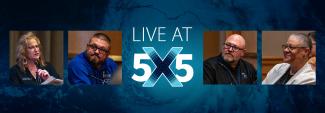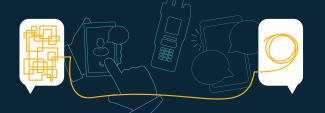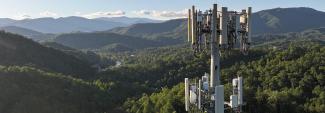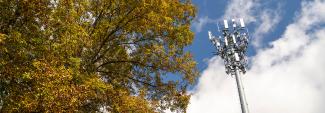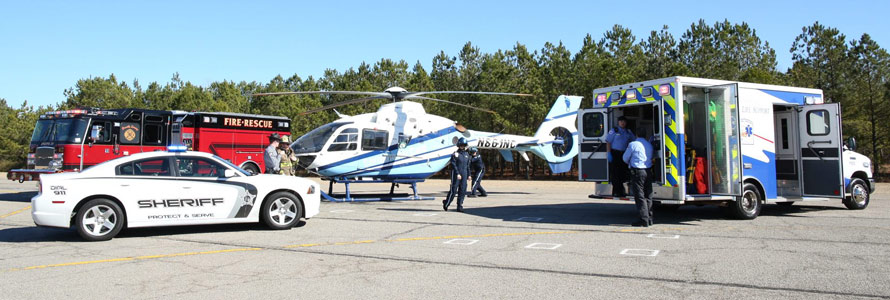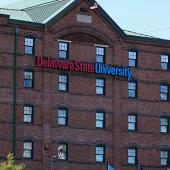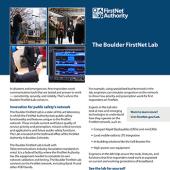Summary
Tabitha Smithers, an emergency aviation flight nurse and Goochland County Fire and EMS volunteer paramedic, uses FirstNet to alleviate communications hurdles in a rural region of Virginia.
Guest
Lori Stone
FirstNet Authority Senior Public Safety Advisor
Tabitha Smithers
Volunteer Paramedic, Goochland County Fire and EMS; Flight Nurse
Transcript
Preview
Narrator: You're listening to Public Safety First, a podcast to help you learn about the First Responder Network Authority and how you can be part of the future of public safety technology.
And now, your host.
Lori Stone: My name is Lori Stone, I’m with the First Responder Network Authority. I’m a Senior Public Safety Advisor in the Mid-Atlantic, and I’m here talking with Tabitha Smithers about her use of FirstNet.
So, Tabitha, thank you again for joining us and talking to us today about FirstNet and how you’re using it. Could you tell me, what do you do?
Tabitha Smithers: So, I volunteer as a paramedic with Goochland County Fire and EMS [Emergency Medical Services], and I’m also full-time as a flight nurse in emergency aviation.
Lori Stone: Okay. Typical day at work – I know probably in emergency medicine no day is typical, but what do you do day-in and day-out?
Narrator: You're listening to Public Safety First, a podcast to help you learn about the First Responder Network Authority and how you can be part of the future of public safety technology.
And now, your host.
Lori Stone: My name is Lori Stone, I’m with the First Responder Network Authority. I’m a Senior Public Safety Advisor in the Mid-Atlantic, and I’m here talking with Tabitha Smithers about her use of FirstNet.
So, Tabitha, thank you again for joining us and talking to us today about FirstNet and how you’re using it. Could you tell me, what do you do?
Tabitha Smithers: So, I volunteer as a paramedic with Goochland County Fire and EMS [Emergency Medical Services], and I’m also full-time as a flight nurse in emergency aviation.
Lori Stone: Okay. Typical day at work – I know probably in emergency medicine no day is typical, but what do you do day-in and day-out?
Tabitha Smithers: So, my full-time position, you know, I provide Helicopter EMS services, or HEMS, to other rural counties and hospitals. So, it’s basically taking critical care medicine out into the community, meeting the patients where they are, and then also servicing Goochland County, which is west of the city of Richmond, and we are a combination system serving a urban area and also a rural area, as well.
Lori Stone: How long have you been at Goochland County?
Tabitha Smithers: So, I’ve been with Goochland about four years now. I started as a paramedic in 2015.
Lori Stone: Can you share a story about what you’ve seen at Goochland that stands out, that you remember?
Tabitha Smithers: You know, in Goochland, we are a very unique system. We are a combination system of paid and volunteers. And having that opportunity to work beside other EMS providers to be able to serve other localities together, to work together as a combination in disaster-type situations I think is a very memorable and opportune time in EMS.
Lori Stone: You talk about how you’re communicating and working with other agencies, other departments – rural, urban – has there been an instance where you have had a challenge communicating or sharing data or information?
Tabitha Smithers: So, you know, as you go out into the rural communities, it can present challenges with communications, and FirstNet, from my experience, has been an opportunity to help alleviate some of that, and to get over some of the hurdles that we can face when there’s multi-jurisdictions involved.
Lori Stone: What is some of the information that you’re sending or receiving when you’re out in the field?
Tabitha Smithers: So, you know, in the field you can get call information, whether it’s through an app on the phone, whether it’s through county dispatch information, whether it’s through HEMS dispatch information. Also, in the emergency aviation community, you have weather, which becomes factors, you have electronic resources, which you need to help to care for these patients, which can be often complex. So, that’s also a very important part of servicing the community.
Lori Stone: You’ve been a FirstNet subscriber for about a year now?
Tabitha Smithers: Yep, just over a year.
Lori Stone: Just over a year.
Tabitha Smithers: That’s right.
Lori Stone: Okay. How did you first hear about it?
Tabitha Smithers: So, in hearing about FirstNet, it just, kind of, was a general conversation between a few EMS providers, and then coming to an EMS symposium which takes place every year, I had the opportunity to meet someone from the FirstNet community, and also from AT&T, and to get educated more on what actually does FirstNet do to help and assist us as EMS providers to close that gap of communication between other providers.
Lori Stone: Closing the gap – I like how you explain that. What do you think about having a dedicated network for first responders?
Tabitha Smithers: I think it’s super crucial that we do have that ability to communicate, because not having the ability to communicate not only affects patient care, but it affects the safety of those that are involved, and it also affects the ability for our providers to be efficient in their care. When you have lots of hurdles to go over, an EMS situation can be very dynamic in itself, and so, efficiency, having access to resources – it is all beneficial to not only the providers, but to the patients.
Lori Stone: Working in a rural county like Goochland, you probably see more people moving in. Are you seeing an increase in the number of calls for service?
Tabitha Smithers: So, we are a growing population, and like I said, we do service an urban and also, a more rural type area, and we assist some other counties, as well. We are growing – the calls are growing – so, the need for an efficient communication is vital.
Emergencies, aren’t planned, you know. They show up when you least expect it, and you don’t know to what extent that you could be involved, whether it’s a simple situation, or whether it becomes multi-jurisdictional in the state, it becomes very complex. So, I think that maintaining communications and just having availability is what’s going to be a crucial part of us continuing to provide care to that patient and having them efficiently back to a high level of care.
Lori Stone: We’re about two and a half years at this point now, into our partnership with AT&T, and you were one of the early subscribers. What do you see, though, in the next five or ten years in EMS and communications? Do you have any wish lists, or something that you want to be able to do that you can’t do now?
Tabitha Smithers: Well, I was very excited to see that we could add on a couple other devices to marry with our cell phones, whether it be our watches and our iPads, and etcetera, because as we are in an electronic age of medicine, it is crucial for us to be able to go across those devices. And I’m sure that as 5G comes into play, and the devices and the communication abilities become better, I’m excited to see what FirstNet will do with that, and a better, for lack of better terms, access to communications in rural areas, so I’m excited to see that expand and go further.
Lori Stone: What do you think about telehealth – and I’m using that just as a generic term for being able to, maybe, do a video conference with a doctor at the hospital?
Tabitha Smithers: That would be great. And especially for those who do not have resources, for the smaller rural communities, and EMS providers who would be able to make those phone calls to a physician, and also to be able to have the video exchange, if necessary, where the physician could see what’s going on with the patient and make those critical decisions right in the field that makes it very efficient for the patient, absolutely.
Lori Stone: I know being a flight nurse, probably your travel time is very short –
Tabitha Smithers: Yes.
Lori Stone: – but then in the ambulance, your travel time can be a lot longer.
Tabitha Smithers: It can be, yes.
Lori Stone: So, I’m thinking a video conference with a doctor in the ED [emergency department] could be –
Tabitha Smithers: Absolutely.
Lori Stone: – could be beneficial.
Tabitha Smithers: And especially to those who may run into a situation where they do not experience that type of patient or that call — it will allow them a resource, especially an expert resource, that could help do better for the patient. And I think that’s our ultimate goal is we have people in our community to serve, and ultimately, that is what’s going to benefit.
Lori Stone: Any final thoughts? Anything you want to wrap up on?
Tabitha Smithers: I don’t, thank you. It’s been a pleasure.
Lori Stone: Thank you, Tabitha.
Tabitha Smithers: I appreciate it.
Lori Stone: We appreciate your time.
Narrator: Thanks for listening today. We're excited to have you join our podcast community. Make sure to subscribe on iTunes, SoundCloud, and YouTube. You can learn more about the First Responder Network Authority at FirstNet.gov and learn about FirstNet products and services at FirstNet.com.



